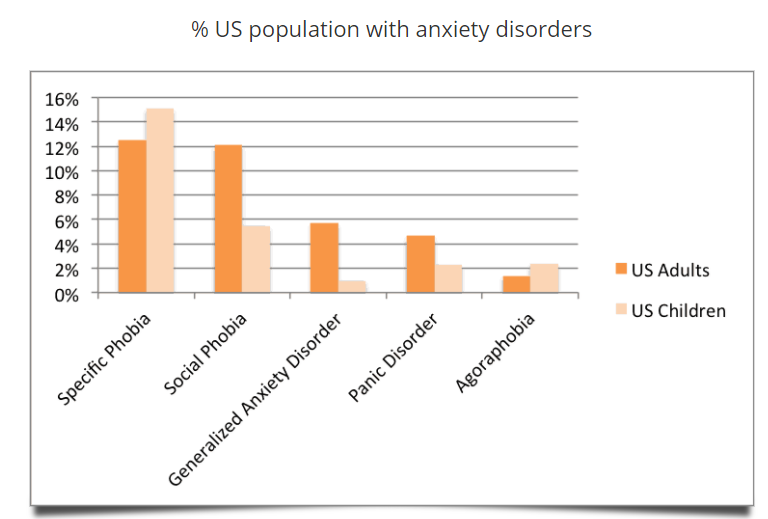Anxiety Awareness
Tips to Help Manage your Anxiety
There are three parts to anxiety: What I think (cognitions); What I feel (physical sensations); and What I do (behaviors). Helping people break down and verbalize these distinct thoughts, feelings, and behaviors helps them understand and face their fears.
Facing fears and anxiety can teach an individual that they are stronger than they think they are, and that they can face something that they thought was insurmountable, and decreases those fears in the long term while avoiding fears increases the chances that they will turn into a problem.
Take care of yourself! If you’re feeling anxious, make sure you’re managing your base stress levels by exercising, eating right, and getting enough sleep. All those factors can play a part in making anxiety better or worse.
Be open to Cognitive Behavior Therapy or Exposure Therapy to help.
How to Help Someone who has an Anxiety Disorder
Educate yourself – Understanding what your friend is going through will help you better support them. It will also help alleviate frustrations that you may have about his or her behavior.
Be supportive – Encourage your friend when he or she is having a tough time and be empathetic to what he or she is going through.
Don’t try to change your friend – Modify your expectations of how you want your friend to be and accept your friend for who he or she is.
Communicate – Be sure to listen with a nonjudgmental attitude. Help him or her find treatment. Sometimes it’s hard to take the first step alone. Be a good support and encourage your friend to get help.
Encourage – Encourage your friend to confront stressful situations and support them through the experience, rather than avoiding anxiety-provoking situations. Avoidance can make the anxiety disorder worse.
Be fun – Sure it’s good to have someone to talk to, but your friends need you to keep the fun going. Help make them laugh and relax.
What are the Most Prevalent Anxiety Disorders in the US?
- Anxiety disorders are the most common mental illness in the U.S., affecting 40 million adults in the United States age 18 and older, or 18.1% of the population every year.
- Anxiety disorders are highly treatable, yet only 36.9% of those suffering receive treatment.
- People with an anxiety disorder are three to five times more likely to go to the doctor than those who do not suffer from anxiety disorders.
- Some anxiety is normal and natural, occurring in children, teens and adults every day. Anxiety is generally defined fear that is future oriented, while phobias are specific exaggerated fears. Anxiety becomes problematic when it begins to interfere with everyday life . (A big example we see is school avoidance)

How to Stop a Panic Attack by Using the 5 Senses:
These are meant to bring you to the present moment , also known as grounding. To begin, sit or stand with both feet firmly on the ground. Take 3 deep breaths at the beginning and end of this exercise. Then start the 5?s?
- 5 Sounds:
Listen for 5 discrete sounds that are different and identify them. For instance: a fan, a dog barking in the distance, the refrigerator humming, your own breathing. - 5 Sensations:
Touch 5 discretely different surfaces ? look for warm, cold, rough, smooth - 5 Smells:
Smell 5 discretely different odors ? fruity, floral, green, spicy, herbal - 5 Tastes:
Taste 5 discrete tastes ? sweet, sour, salty, cold, hot - 5 Sights:
Take an inventory of 5 things around you. You could identify 5 colors, or objects you see.
Where Can I Find More Information?
If you believe your child might need more services, contact their pediatrician for an appointment and potential referral. While we are unable to make specific referrals, these are some resources in the Seattle area.
